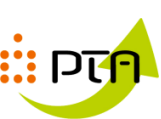Overview
Compatible from small samples up to 100 mm wafers, the PTA has a wide range of equipment available for performing all the necessary steps in functionalization of micronic and submicronic objects.
The equipment is classified by technological family:
- Lithography field : the set of technological steps for producing photoresist patterns on the sample. The patterns will subsequently delineate the different areas of the devices to be processed. The PTA has at its disposal equipment for induction and annealing of photoresist on samples ranging from a few mm² to 100 mm wafers. Lithography can be optic (UV, DUV) , electronic with final resolutions of 7 nm or done by nanoimprint.
- Etching field : either chemical or dry, etching enables the substrate / materials to be patterned through lithography or hard mask. The available etching chemistries are proper to the materials to be etched and the etching can be isotropic or anisotropic.
- Deposition field : either by pulverisation and evaporation or by plasma, the depostion enables the depositon of thin film (in the range from the nanometers to the micrometers) of oxyde or metal. The PTA is equipped with a set of depostion tools for metal, oxides, (SiN, SiO2, HfO2, Al2O3...) and semiconductors (Si, Ge,..).
- Metrological field : the PTA provides metrology and monitoring equipment such as optic and electronic microscope, mechanical profilometer, spectroscopic ellipsometer which are indispensable complements in process control.
- Back-end field: the PTA is equipped with a microsystems line dedicated to fabrication of MEMS and NEMS. This includes: front/back end alignment exposure, chemical mechanical polishing, supercritical drying, vapor HFetcher, and molecular bonding.
